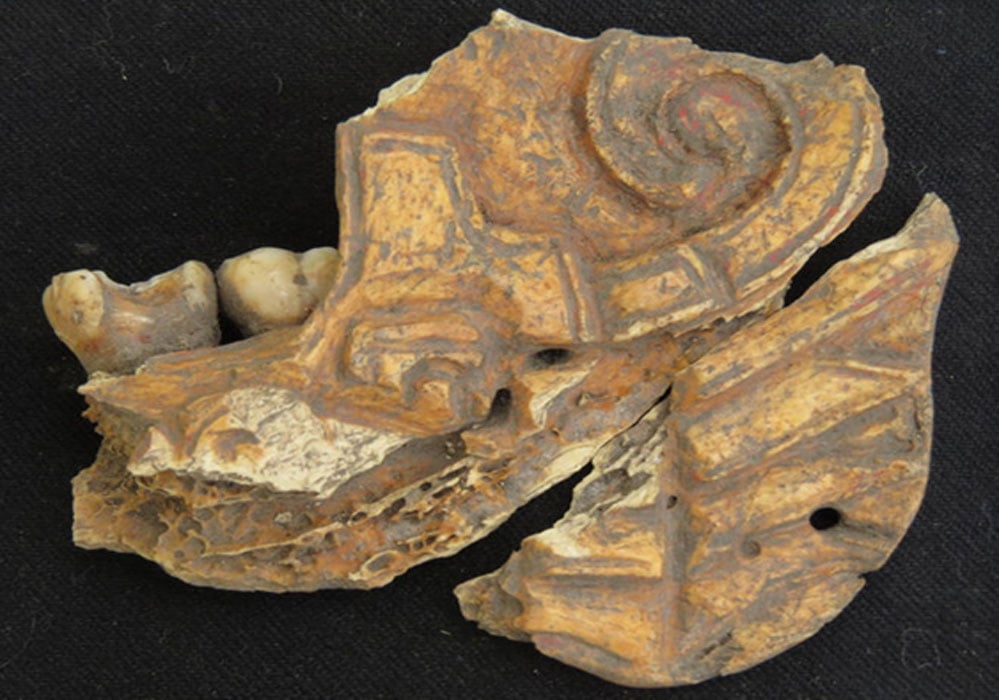Jawbone Jewelry: Archaeologists Discover 1,300-Year-Old Painted Bone Pendants in Mexico
Archaeologists have unearthed painted human jawbones at a ceremonial site in Mexico associated with the ancient Zapotec civilization. It is believed the bones were worn as necklace pendants as part of their ancestor veneration rites. Dozens of whistles and statuettes, some honoring the Mesoamerican god Xipe Totec, were also found.
Ceremonial Site of the Zapotec
Live Science reports that the discovery was made at the ancient ceremonial site of Dainzú-Macuilxóchitl in the Oaxaca Valley in southern Mexico. Dainzú is a Zapotec archaeological site that was first occupied 700-600 BC, but the main phase of occupation dates from about 200 BC to 350 AD, and the latest discovery belongs to this period.

The archaeological site of Dainzú-Macuilxóchitl in the Oaxaca Valley in southern Mexico, once inhabited by the Zapotec civilization (public domain)
The Zapotec civilization, or “Cloud People” as they are sometimes known, were an indigenous, pre-Columbian civilization that rose to power around 2,500 years ago. They left behind impressive ruins and provided a lasting influence on many of the cultures that superseded them.

Panoramic of the Zapotec ruins of Monte Alban, Oaxaca, Mexico. (public domain)
Painted Bones
The decorated jawbones were discovered in a ceremonial area of the Dainzú site, and while they were found alongside artifacts honouring the god Xipe Totec, who is associated with human sacrifice, the researchers do not believe the mandibles came from sacrifice victims.
According to Jeremias Pink, a graduate student at Oregon State University, who was involved with the finding, there is evidence that the Zapotec people exhumed, painted, and modified the bones of those buried in the residential complex.
People were "probably going into the tombs of their ancestors and bringing the remains of their ancestors out," Pink said [via Live Science]. People likely used the bones of their ancestors "in a ritual way to demonstrate the linkages between themselves and their ancestors as a way of sort of legitimizing their positions within that community," he said.

Xipe Totec as depicted in the Codex Borgia, shown holding a bloody weapon and wearing flayed human skin as a suit. (public domain)
Amazing Artifacts
In the same area that the jawbones were found, researchers also unearthed around 3,000 ceramic fragments of figurines, 30 figurine molds, and 1,600 whistle fragments. Some of the figurines depict Xipe Totec, while many others remain identified.
Numerous Mesoamerican civilizations are known for their ornate and complex whistles, which were designed to emulate the sounds of animals, nature, and even human screams. The whistles themselves were often shaped like animals, humans or mythical beings.
- The Lost Zapotec: Vibrant Mesoamerican Civilization of the Cloud People
- The Music of the Maya: Mysterious whistles Confound Experts
- Aztec Death Whistles Sound like Human Screams and May Have Been Used as Psychological Warfare

Left: A whistle in the shape of a frog from Yaxchilan (Tlapitzalli.com). Right: Maya monkey whistle. (William Scott / BigStockPhoto).
The researchers speculate that the whistles and figurines had been intentionally smashed as part of their ceremonial rites, as evidence of this ritual has been found at numerous other Mesoamerican sites.
Top image: Carved and painted human mandible (jawbone) was found in a ceremonial area within a residential complex at the site of Dainzú-Macuilxóchitl in Mexico. Credit: Erica Ausel (Ph.D. Indiana University)



















